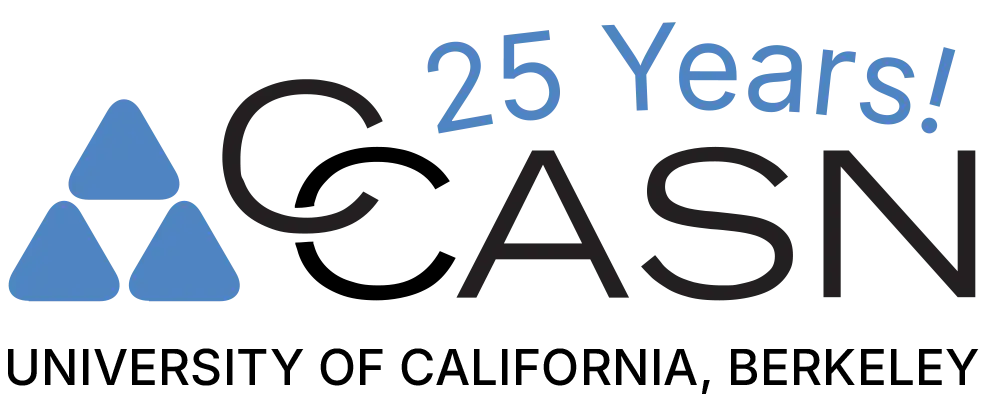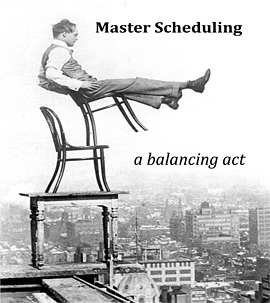Master Schedule Guide
Overview
As schools evolve to meet the demands of the 21st Century, the process of developing a master schedule has become increasingly complex. As learning rather than time becomes the constant, traditional ways of looking at school calendars, bell schedules, and the how, where, and when we learn and teach are changing.
This guide is designed to support schools that are using a Linked Learning approach and/or wall-to-wall or multiple pathways/academies approach to redesign high schools. Our goal is to build a community of practice around master scheduling so that all students are supported to be college and career ready in thematic pathways that combine rigorous academics, challenging technical learning, work-based learning, and personalized supports.
Ideally, each student will be fully engaged in a learning community that reflects her/his college and career interests. Ideally, each pathway/academy will include cohorts of students that are purely scheduled, pathway/academy teachers who share common planning time, and programs of academic-technical study that are “blocked” in such a way to support deeper learning and the flexible use of time.
This online guide provides:
• A sequenced path through the master scheduling process
• Examples of best and emerging practices
• Resources and links to information about many aspects of scheduling
• Downloadable tools to support work at all stages in the master scheduling process
This Master Schedule Guide is a living resource. There are many individuals and master schedule teams who contributed their knowledge, expertise, and time in the development of this online Master Schedule Guide. We conducted lengthy interviews with identified scheduling experts. We brought together cadres of scheduling experts to explore master scheduling topics in depth and called on them and others to review various drafts of the Master Schedule Guide and various tools and resources. We offer our deepest appreciation to all.
We also build on the earlier CCASN Scheduling Guide for Career Academies and Other Small Learning Communities (2006) and contributors to our first guide must also be acknowledged.
In addition, CCASN received funding and generous support for the development of the 2006 Guide from the National Academy Foundation (NAF) and the 2014 Guide from ConnectEd California and the James Irvine Foundation.
Among the individuals, schools, and organizations that have contributed thus far to the development of the Master Scheduling Guide are:
- Salma Aziz, Assistant Principal, Porterville High School, Porterville Unified School District, Porterville, CA
- Ralph Baker, former Senior Research Associate, WestEd, Oakland, CA
- Todd Barcial, Registrar, Kapaa High School, Kapaa, Kauai, HI
- Fran Beasley, Information Management Specialist, Beaumont High School, St. Louis, MO
- Ahdam Brown, Counselor, Juan Crespi Middle School, West Contra Costa Unified School District, Richmond, CA
- John Burdick, former Technical Coordinator, Watsonville High School, Watsonville, CA
- Debra Cannon, International Baccalaureate/ Physics Teacher, Trinity High School, Euless, TX; former vice principal at South Grand Prairie High School, Grand Prairie, TX
- Joseph DiMartino, President, Center for Secondary School Redesign, Inc.
- Steve Graybehl, AB790 Mentor Coordinator for regional Linked Learning Consortium, former principal, Porterville Unified School District, Porterville, CA
- Kathy Hamilton, Director of College and Career Options, Secondary Education, Elk Grove Unified School District, Elk Grove, CA
- Beverlye Horton, Senior Director, Education Projects, Academic Partnerships; former SLC Coordinator for South Grand Prairie High School, Grand Prairie, TX
- Sue Hubbard, Program Specialist, Career Technical Education, Elk Grove Unified School District, Elk Grove, CA
- Allison Huie, Vice Principal, Kennedy High School, West Contra Costa Unified School District, Richmond, CA
- Jacqueline Inouye, Registrar, Kauai High School, Lihue, Kauai, HI
- Warren Izumigawa, Registrar, James Campbell High School, Ewa Beach, Oahu, HI
- Valerie Jones, Vice Principal, Braden River High School, Bradenton, FL
- L. Renee Lama, Vice Principal, Kennedy HIgh School, West Contra Costa Unified School District, Richmond, CA
- Cheryl Lawton, Principal, Milpitas High School, Milpitas, CA (former Co-Principal, Hillsdale High, San Mateo, CA)
- Theresa McEwen, Director, High School Resdesign/Linked Learning, Sacramento City Unified School District, Sacramento, CA
- Raymond Navarrete, Counselor, Rosemont HIgh School, Sacramento, CA
- Steve Neill, former Counselor, Tennyson High School, Hayward, CA
- Gary Oyler, Registrar, Kaimuki High School, Honolulu, Oahu, HI
- Hatha Parrish, Director of Federal and State Programs/Linked Learning Director, Centinela Valley Union High School District, Lawndale, CA
- John Perryman, former SLC Lead Teacher, Luther Burbank High School, Sacramento, CA
- Kal Phan, Assistant Principal, Hiram Johnson High School, Sacramento City Unified School District, Sacramento, CA
- Kathleen Prasch, former Principal, Santa Teresa High School, San Jose, CA
- Julie S. Ramos, Registrar, James Campbell High School, Ewa Beach, Oahu, HI
- Erik Rice, Supervisor of College and Career Readiness, San Francisco Unified School District (also former Principal at Life Academy In Oakland Unified School District), San Francisco, CA
- David Riley, former Principal, Andrew Hill High School, San Jose, CA
- Marisa Saunders, Principal Associate, Annenberg Institute for School Reform at Brown University, Providence, RI
- Tim Sippel, Principal, John Muir High School, Pasadena Unified School District (also former Linked Learning Director for Pasadena)
- Karen Shores, Consultant, California Department of Education, Sacramento, CA
- Therese Sprecco, CTE/ROP Director II, Grossmont Union HIgh School District, El Cajon, CA
- Roman Stearns, Director, Leadership Development, ConnectEd: The California Center for College and Career, Berkeley, CA
- Mary Vinciguerra, Assistant Superintendent of Educational Services, Liberty Union High School District, Brentwood, CA
- Russ Woolsey, former Registrar, Waianae High School, Waianae, Oahu, HI
- Carrie Yamamoto, Registrar, President Theodore Roosevelt High School, Honolulu, Oahu, HI
- Dave Yanofsky, Director, Media and Youth Development, ConnectEd: The California Center for College and Career, Berkeley, CA
- Karen Zalac, former Vice Principal, East High School, Columbus, OH
CCASN Staff who co-authored and/or contributed to this Guide and/or to the 2006 CCASN Scheduling Guide include: Patricia Clark, Charles Dayton, Erin Fender, Tracy Hanna, Annie Johnston, Pedro Nava, Phil Saroyan, David Stern, Pierre Tchetgen, and Susan Tidyman. We were supported in this work by Carrie Collins, our CCASN Administrator, and Gilberto Conchas, Director of our Southern California CCASN Center at UC Irvine. The web architecture and development (and so much more) is the work of Nick Despota of Lumina Media and his programmer Tod Abbott.
The Master Schedule Notebook/Log/Journal/Portfolio may be maintained in a binder, as a set of folders, as a set of files on a platform such as Google Drive, or elsewhere in the cloud.
Recommendations for Master Schedule Notebook content as well as checklists, templates, prompts, and forms are provided in the Master Schedule Notebook section for each Stage of the Master Schedule development process. In addition, recommendations for a District level Master Schedule Notebook are included in the District System of Support section of the Guide.
Our work resulted in a series of guides now available on the CCASN website, along with other tools, templates, databases, videos, and more. CCASN continues to engage in a broad range of efforts that join research findings with practical solutions that improve the college and career readiness of youth.
CCASN is funded by private foundations, as well as through contracts with states, districts, and industry and community partners.
CCASN MASTER SCHEDULE GUIDE DEVELOPMENT TEAM
Lead Authors: Patricia Clark and Phil Saroyan
With the support and contributions of our fabulous CCASN Colleagues – Charles Dayton, Erin Fender, Annie Johnston, Pedro Nava, David Stern, Pierre Tchetgen, and Susan Tidyman.
With the support of Carrie Collins, our CCASN Administrator, and Gilberto Conchas, Director of our Southern California CCASN Center at UC Irvine. With web design and development, guidance, and creative contributions by the CCASN web master Nick Despota of Lumina Media and his programmer Tod Abbott.
With the wisdom, expertise, and contributions of many district, school, pathway/academy practitioners in the field. (See acknowledgements)
With generous support from he James Irvine Foundation and ConnectEd California
And building on the earlier CCASN Scheduling Guide for Career Academies and Other Small Learning Communities and the work of authors Patricia Clark, Charles Dayton, Susan Tidyman, and Tracy Hanna and the support of the National Academy Foundation
RESOURCES FOR THIS STAGE |
| All Resources in the Master Schedule Guide
Introduction to the CCASN Master Schedule Guide (PowerPoint) College and Career Academies National Standards of Practice for Career Academies (pdf) Linked Learning Quotations about Master Scheduling Master Schedule Roles and Responsibilities Worksheet Master Schedule Process (abridged) |
OTHER RESOURCES |
|
Bibliography of Master Schedule, Bell Schedule and School Calendar Master Schedule Glossary (docx) |

